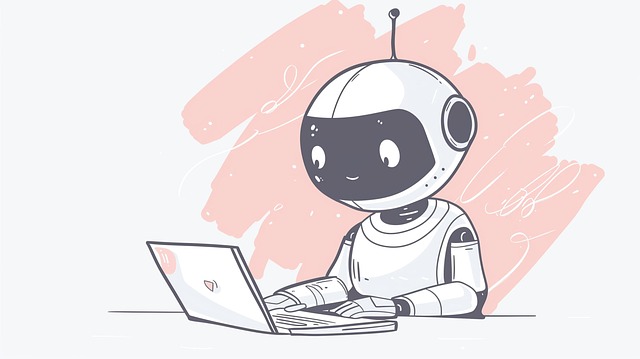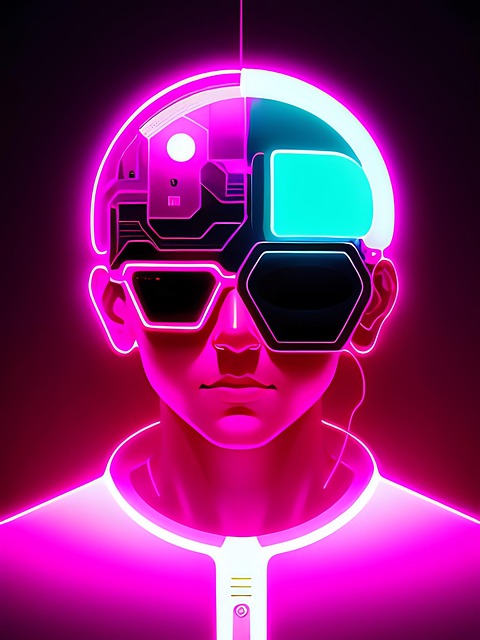AI chatbots have transformed customer interactions by offering instant, personalized support using natural language processing (NLP). Developing a successful AI chatbot involves three main steps: defining its purpose (e.g., customer support or sales), designing conversation flows, and training with diverse data to enhance response accuracy. Essential tools for creation include platforms like Dialogflow, IBM Watson Assistant, Microsoft Bot Framework, and Rasa, which enable seamless integration across messaging channels. The strategic process includes setting clear goals, understanding user needs, crafting relevant responses, and continuously refining through iterative testing and machine learning techniques.
Building your own scripted AI chatbot can transform customer interactions and automate tasks, making it a valuable asset for businesses. This comprehensive guide takes you through every step, from understanding the fundamentals of AI chatbots to deploying an effective solution. We’ll explore defining your chatbot’s scope, choosing the right platform, designing engaging conversations, training with data, and continuously improving performance. By following these steps, you’ll be well on your way to creating a powerful AI chatbot.
- Understanding AI Chatbot Fundamentals
- Defining the Scope and Purpose of Your Chatbot
- Choosing the Right Development Platform
- Designing Conversation Flows and Dialogues
- Training the Chatbot with Data and Algorithms
- Testing, Iteration, and Continuous Improvement
Understanding AI Chatbot Fundamentals

AI chatbots have transformed how businesses interact with their customers, offering instant and personalized support. Understanding their fundamentals is crucial for building effective scripts. At their core, AI chatbots use natural language processing (NLP) to interpret user queries and generate relevant responses. This technology enables machines to comprehend human language nuances, allowing conversations that feel natural and human-like.
Building a scripted AI chatbot involves defining its purpose, designing conversation flows, and training it with relevant data. Developers must map out potential user queries and craft appropriate responses, ensuring the script covers a wide range of scenarios. Machine learning algorithms then analyze this data to improve response accuracy over time, making AI chatbots increasingly sophisticated and valuable tools in customer service.
Defining the Scope and Purpose of Your Chatbot

Defining the scope and purpose of your AI chatbot is a fundamental step in its development. This involves determining who the target audience is, what tasks or inquiries the chatbot will handle, and how it will interact with users. For instance, your chatbot might be designed to provide customer support for an e-commerce platform, answer basic questions about company policies, or even facilitate sales by guiding users through the purchasing process.
Knowing your chatbot’s purpose guides the choice of conversational flow, response generation techniques, and integration with existing systems. It’s essential to set clear goals, such as improving user satisfaction, reducing response times, or increasing sales conversions, to ensure that your AI chatbot aligns with your business objectives and delivers a seamless user experience.
Choosing the Right Development Platform

When building an AI chatbot, selecting the right development platform is a critical first step. Look for platforms that offer robust natural language processing (NLP) capabilities and easy integration with popular messaging channels. This ensures your chatbot can understand user queries effectively and communicate seamlessly across various platforms where your target audience spends time.
Popular options include Dialogflow (by Google), IBM Watson Assistant, Microsoft Bot Framework, and Rasa. These platforms provide pre-built components and customizable workflows, making it easier to develop complex conversational flows without needing extensive coding knowledge. Additionally, they offer scalable infrastructure, enabling your AI chatbot to handle high user volumes as your business grows.
Designing Conversation Flows and Dialogues

Designing engaging and natural conversations for an AI chatbot involves carefully crafting conversation flows that mimic human interactions. This process begins with defining clear objectives for each interaction, considering user personas, and mapping out potential user queries or statements. By understanding the range of possible inputs, developers can create relevant and contextually appropriate responses, ensuring a smooth and meaningful dialogue.
Effective dialogues should be structured with an eye towards realism and adaptability. Incorporating branching conversations allows the chatbot to navigate different topics based on user input, creating a dynamic exchange. Using natural language processing (NLP) techniques, developers can enable the AI to interpret nuances in user messages, such as sarcasm or sentiment, leading to more accurate and context-aware responses. This iterative design process involves continuous testing and refinement to create seamless conversations that enhance the user experience for AI chatbots.
Training the Chatbot with Data and Algorithms

Training an AI chatbot is a meticulous process that involves feeding it vast amounts of data and employing sophisticated algorithms to teach it how to understand and respond to user queries. The foundation lies in gathering diverse datasets relevant to the chatbot’s intended purpose, encompassing a wide range of potential questions and responses. These datasets are then meticulously labelled and structured, ensuring clarity and consistency.
Advanced machine learning techniques, such as natural language processing (NLP) and deep learning, come into play here. Algorithms learn patterns from the data, enabling them to predict suitable responses based on user inputs. Through iterative training and adjustments, the chatbot improves its accuracy and contextual understanding, making interactions with users more fluid and human-like.
Testing, Iteration, and Continuous Improvement

Testing is a crucial step in building effective AI chatbots. Once your chatbot is developed, it’s essential to subject it to rigorous testing to ensure its performance meets expectations. This involves deploying the chatbot in simulated conversations, evaluating its responses for accuracy, relevance, and coherence. Automated testing tools can help gauge the chatbot’s ability to understand user inputs and generate appropriate outputs. Manual testing by human evaluators provides valuable qualitative feedback on the chatbot’s conversational flow, tone, and overall user experience.
Iteration and continuous improvement are at the heart of refining your AI chatbot. Based on testing results, make adjustments to the underlying algorithms, training data, and conversational scripts. Learn from user interactions—both positive and negative—to enhance the chatbot’s performance over time. Regularly update and expand its knowledge base to keep up with evolving language trends and user needs. This ongoing process ensures that your AI chatbot remains effective, engaging, and aligned with user expectations in a dynamic environment.
Building an AI chatbot is a multifaceted process that involves understanding fundamental concepts, defining clear scope and purpose, selecting suitable development platforms, designing intuitive conversation flows, training with robust data sets, and continuously refining through testing and iteration. By following these steps and leveraging the right tools, you can create effective AI chatbots that enhance user experiences across various applications. Remember, the key to success lies in ongoing optimization based on real-world interactions, ensuring your chatbot remains relevant and engaging in a dynamic digital landscape.
